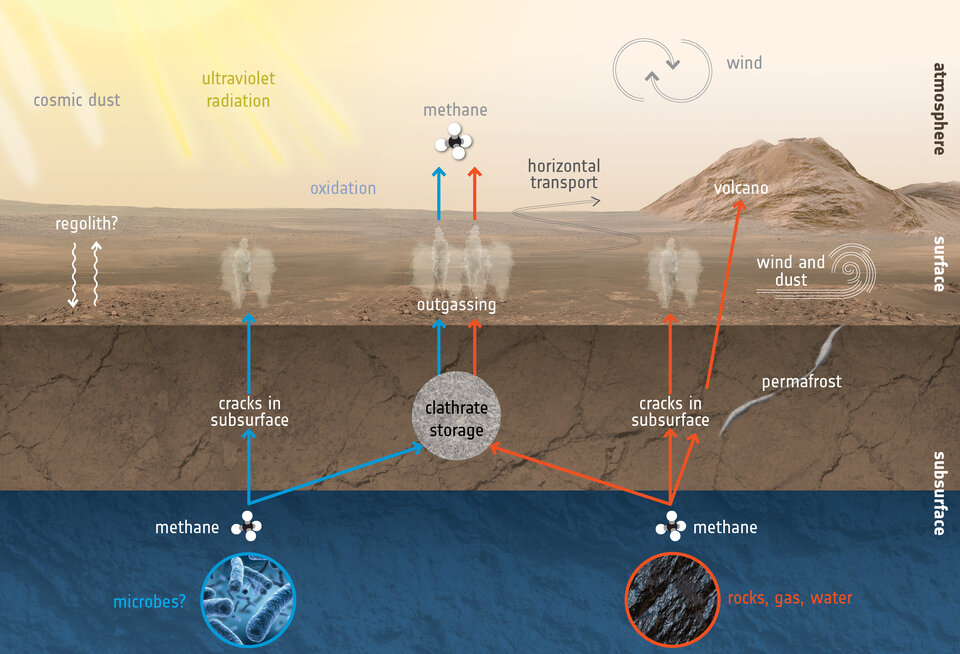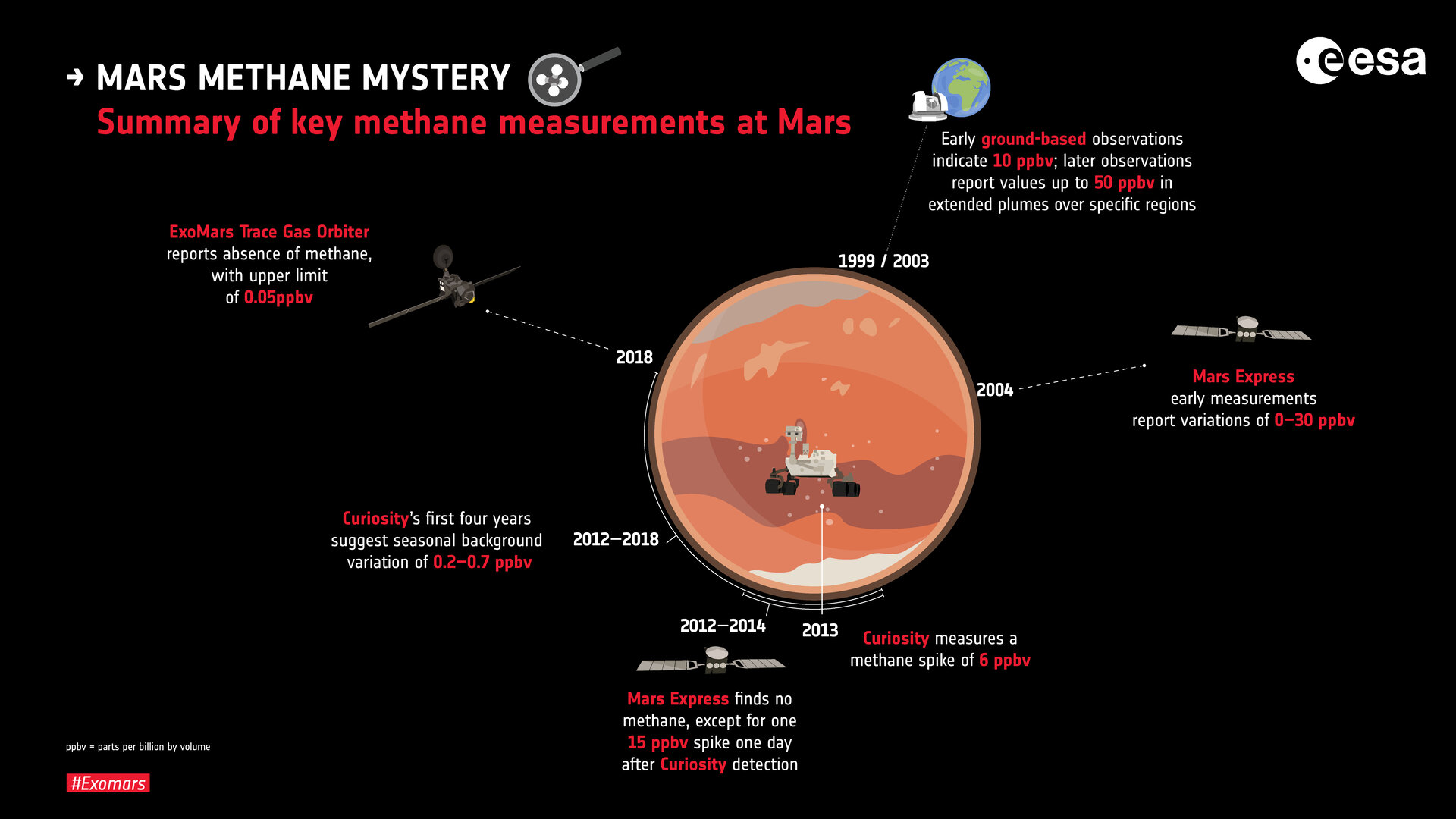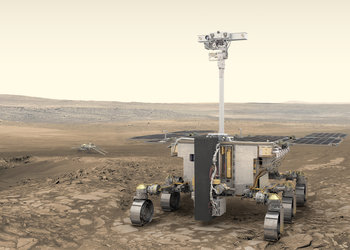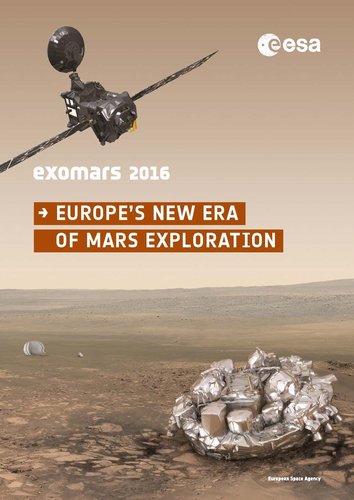The methane mystery
On Earth, living organisms release much of the planet’s methane (methane is also one of Earth’s trace gases). It is also the main component of naturally occurring hydrocarbon gas reservoirs, and a contribution is also provided by volcanic and hydrothermal activity. Because of the key role natural biology plays in Earth’s methane production, confirming the existence of methane on Mars, and distinguishing between the potential sources, is a top priority of the ExoMars Trace Gas Orbiter.
Methane on Mars is expected to have a rather short lifetime – around 400 years – because it is broken down by ultraviolet light. Atmospheric mixing (for example, by winds) should quickly lead to a more or less uniform background concentration. But previous observations hint at seasonal variations in methane abundance, with concentrations varying with location and time. If this is correct, there must be an active source to replenish the supply and, at the same time, a relatively quick way of removing it in order to account for the apparent rise and fall in the measurements.

One possibility is a geological process known as serpentinisation, a subsurface process involving the interaction of olivine-rich rocks with water. On Mars, this may occur underground, perhaps in combination with warmer, volcanic environments.
While discovering if Mars is still geologically active today is extremely motivating, an alternative exciting explanation for the methane is that it is being produced by microorganisms deep below the surface that produce methane as a product of their metabolism. Alternatively, the methane could have been produced long ago in the past, become trapped in methane hydrates called clathrates (a crystal-like structure of water, similar to ice), which are only just being released today.
TGO will map the spatial and temporal distribution of the atmospheric methane to help distinguish between the different scenarios, to a much higher sensitivity than any previous or current mission at Mars.
For example, ESA’s Mars Express was one of the first spacecraft to make methane measurements from orbit, finding a global average of 10 parts per billion by volume (ppbv), and with significant spatial and temporal variability of tens of ppbv over the course of its mission. However, the detections were at the limits of the instrument’s (the Planetary Fourier Spectrometer) sensitivity. Detections by other spacecraft – from orbit and from in situ rover measurements – have also been the subject of much debate.
TGO has the capability to detect and analyse methane and other trace gases, even in low concentrations, with an improved accuracy of three orders of magnitude compared to all previous measurements. Furthermore, it will be able to detect key ‘isotopologues’ of methane and water (isotopologues are molecules that have at least one atom with a different number of neutrons than the parent chemical species).
Measurements of methane on Earth suggest that methane originating from biological and geological processes have a distinctive isotopic signature, and thus are key in constraining the origin and history of these species on Mars.










